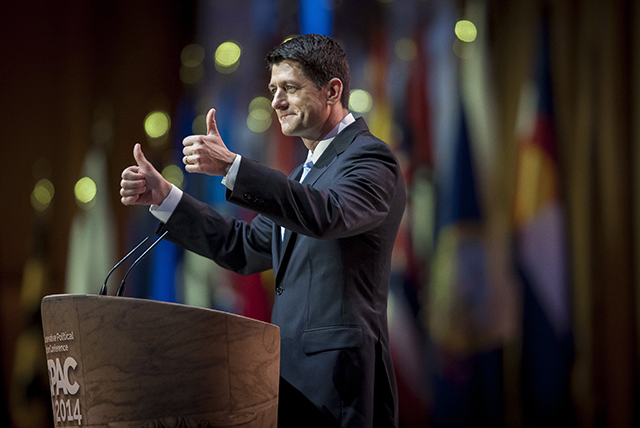The Policy Solution That Could Help You Spend Less Time Stuck in Traffic
Emily Goff /
States—not Washington—best understand their transportation problems and how to solve them.
House Budget Committee Chairman Paul Ryan (R–WI) recently expressed this fact at the 2014 Conservative Political Action Conference (CPAC). Describing Sen. Mike Lee (R–UT) and Rep. Tom Graves’ (R–GA) Transportation Empowerment Act (TEA) proposal, Ryan explained, “They want to give the states more control over our highways so that they can build the roads they need. Because we believe families should spend less time in traffic and more time at home.”
This latest cheer for increasing state, local, and private sector control and flexibility over transportation projects and funding echoes comments made by Nebraska Gov. Dave Heineman (R) and Arizona Gov. Jan Brewer (R) at National Governors Association winter meeting.
As Heineman said, “I think the states have been a lot more innovative than the federal government. I’ve often thought, why don’t you just give us the federal gas tax and let us take care of it.” His frustration with the current system stems from its centralized and politicized nature, which breeds uncertainty among the states.
Lee and Graves’ TEA proposal would shift control over many of America’s roads and bridges from the federal government to the states. Specifically, this legislation would incrementally lower the federal gas tax and the scope of the federal program, while handing increasing amounts of funding and program authority over to the states.
Currently, Washington is an unnecessary middleman in the highway program, imposing an 18.4 cents-per-gallon federal gas tax—or highway user fee—on motorists, truckers, and bus operators. But the money is not all spent on activities that benefit the users, as was the tax’s original intent. Congress diverts billions of dollars annually to non-road, non-bridge transportation activities, such as subways and streetcars, bike paths, and streetscaping. These activities are parochial and fail to relieve traffic congestion or enhance mobility for the drivers that pay the gas tax that funds the program.
As true innovators, states are mobilizing: 20 states are embarking on new transportation funding initiatives and others are developing creative ways to finance large, expensive projects. According to transportation expert Ken Orski’s Innovation Briefs, Wyoming, Maryland, and others have raised state gas tax rates. Oregon is trying out a voluntary mileage-based user fee system. And, innovating financing has helped pay for the $2 billion I-495 HOT lanes (Northern Virginia) and $2.6 billion LBJ Expressway project (Dallas, Texas).
Policies such as those in the TEA proposal and Rep. Scott Garrett’s (R–NJ) Surface Transportation and Taxation Equity (STATE) Act—which allows states to opt out of the federal highway program—offer Congress a way to fix the nation’s transportation woes. With fewer burdensome federal mandates, projects would experience fewer delays and cost overruns. And states could address their priorities—not those of Washington’s special interest groups. What works to alleviate congestion in Los Angeles, California may not work in Phoenix, Arizona, and while Portland, Oregon may value bicycle paths and buses, cities in Nebraska may find that roads better solve their transportation problems.
Rethinking the federal highway program, as these Governors and Members of Congress propose, is an obvious, attractive solution for the states—those laboratories of democracy—and marks a welcome departure from business-as-usual in Washington.
This post has been modified.

